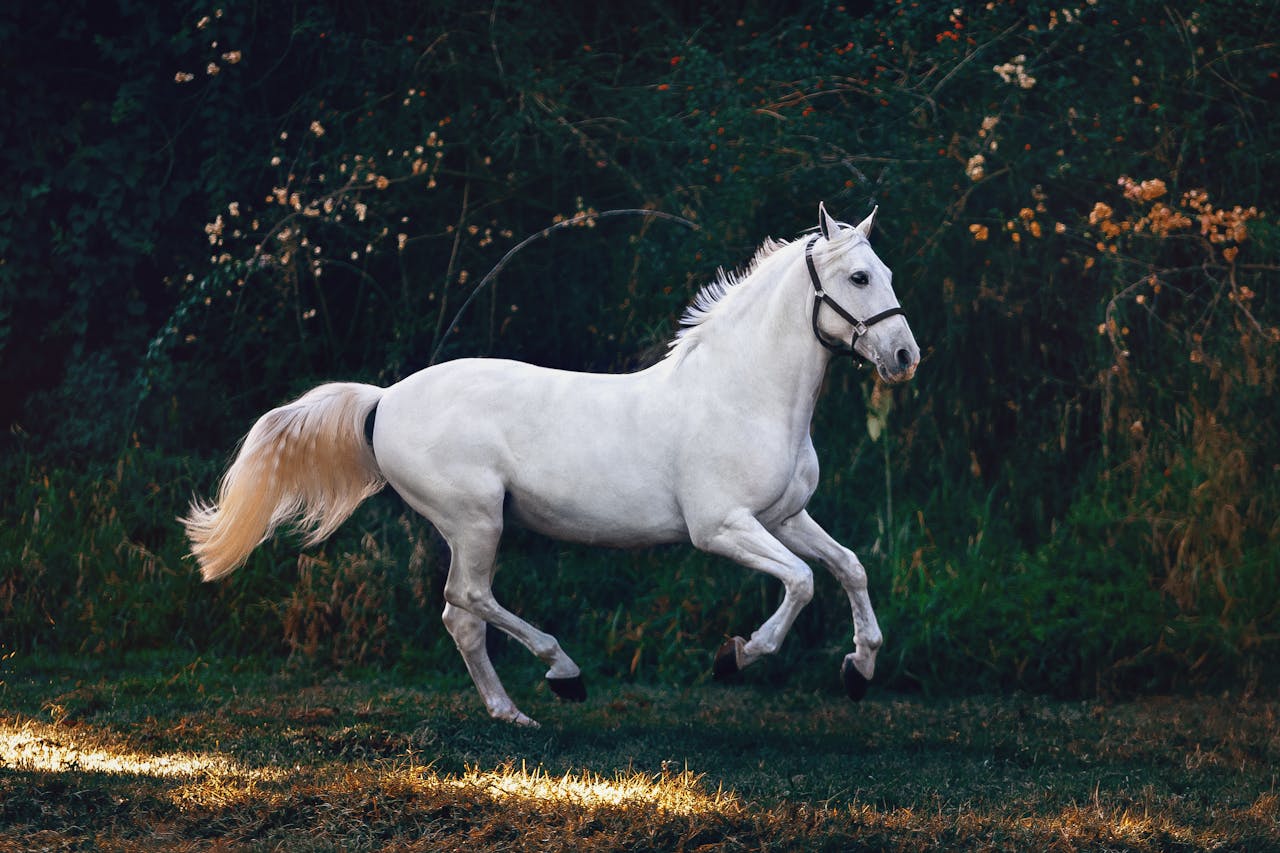
Mastering Horse Ground Exercises: The Key to a Trustworthy and Confident Horse
Sep 12, 2024
Ground exercises are an important aspect of horse training. These activities take place on the ground and help create a strong bond between horse and handler.
They build trust, respect, and communication, all of which are crucial for any horse, whether it's young, experienced, or just beginning its training journey.
What is a Horse Ground Exercise?
Horse ground exercises are activities that involve handling your horse without riding. They teach basic skills such as leading, stopping, backing up, and responding to gentle pressure.
These exercises are designed to improve your horse’s behavior and responsiveness, making them more manageable and cooperative.
Ground training also develops their physical abilities by improving balance, strength, and coordination.
Why Train Your Horse with Ground Exercises?
Ground training offers numerous benefits. It's not just about getting your horse ready for riding; it also ensures they behave well and are easy to manage in various situations.
Here are some of the key reasons to include ground exercises in your horse's routine:
1. Strengthens Trust and Communication
Ground training helps build a trusting relationship between horse and handler.
By working together on the ground, your horse learns to trust you, and you develop a clearer way of communicating. This bond makes your horse more confident and cooperative.
2. Encourages Good Manners
Training on the ground teaches your horse how to behave in a respectful manner.
Your horse learns to respect your space, follow your lead, and respond to your cues. This makes everyday handling, such as grooming and walking, safer and easier.
3. Improves Responsiveness
Ground exercises make your horse more responsive to your commands.
Whether you're asking them to walk, stop, or move backward, they learn to follow your directions more attentively.
This lays a strong foundation for future training, including riding.
4. Develops Flexibility and Strength
Many ground exercises work on improving your horse's physical condition.
Lunging, leading over poles, or simple groundwork movements help to increase their flexibility, balance, and overall strength, which are essential for keeping your horse fit and healthy.
5. Boosts Confidence
For horses that are anxious or easily spooked, ground training is a great way to build their confidence.
Exercises that involve new or unfamiliar objects can help your horse stay calm and composed, which is important when facing different environments or situations.
6. Prepares the Horse for Riding
Good ground training sets the stage for a smooth transition to ridden work.
Horses that are well-trained on the ground are more likely to respond better when it comes time for riding, making the experience safer and more enjoyable for both horse and rider.
7. Promotes Problem-Solving Skills
When horses are asked to back up, move sideways, or perform other tasks on the ground, they need to think about how to respond to your requests.
This problem-solving ability helps them become more adaptable and aware, skills they will carry into other aspects of their training.
8. Provides Mental Stimulation
Horses need mental engagement just as much as physical exercise. Ground exercises challenge your horse to focus, learn, and understand what you're asking them to do.
This mental stimulation helps prevent boredom and keeps your horse sharp.
9. Ensures Safety
A horse with good ground manners is much safer to handle, whether in the stable or out in public.
Ground training teaches your horse how to behave around you and in different situations, reducing the risk of accidents and making handling more predictable.
10. Addresses Behavioral Issues
If your horse has issues like pushiness or stubbornness, ground training can help correct these behaviors.
Consistent work on the ground helps re-establish boundaries and reinforces positive behavior, making your horse more respectful and cooperative.
Examples of Ground Exercises
There are various ground exercises you can practice to improve your horse’s behavior, fitness, and overall well-being.
Here are some common ones:
1. Leading
Teaching your horse to lead properly is essential. The horse should walk beside you, stop when you stop, and move forward when asked, all while respecting your personal space.
2. Lunging
Lunging involves your horse moving in a circle around you, which helps improve their balance, rhythm, and obedience.
It’s a great way to build fitness while teaching your horse to respond to voice commands and body language.
3. Backing Up
Asking your horse to back up on command reinforces the idea that they should respect your space. It’s a simple but effective way to teach your horse to yield to your cues.
4. Yielding to Pressure
Teaching your horse to move away from pressure, whether it's a light touch or the pressure of a rope, helps them understand how to respond to your signals. It also makes your horse more aware of their body and your instructions.
5. Desensitization
Desensitization involves introducing your horse to objects or situations that may be unfamiliar or frightening, such as tarps or loud noises.
Over time, these exercises help your horse become calmer and less reactive.
Conclusion
Horse ground exercises are essential for creating a solid foundation in your horse’s training.
They not only improve physical fitness but also enhance behavior, safety, and overall communication between horse and handler.
Incorporating ground exercises into your training routine will help ensure your horse is well-mannered, confident, and responsive in any situation.
Ground training is not just about preparing for riding—it’s about fostering a partnership based on trust and respect.
By investing time in ground exercises, you create a more enjoyable and fulfilling experience for both you and your horse.